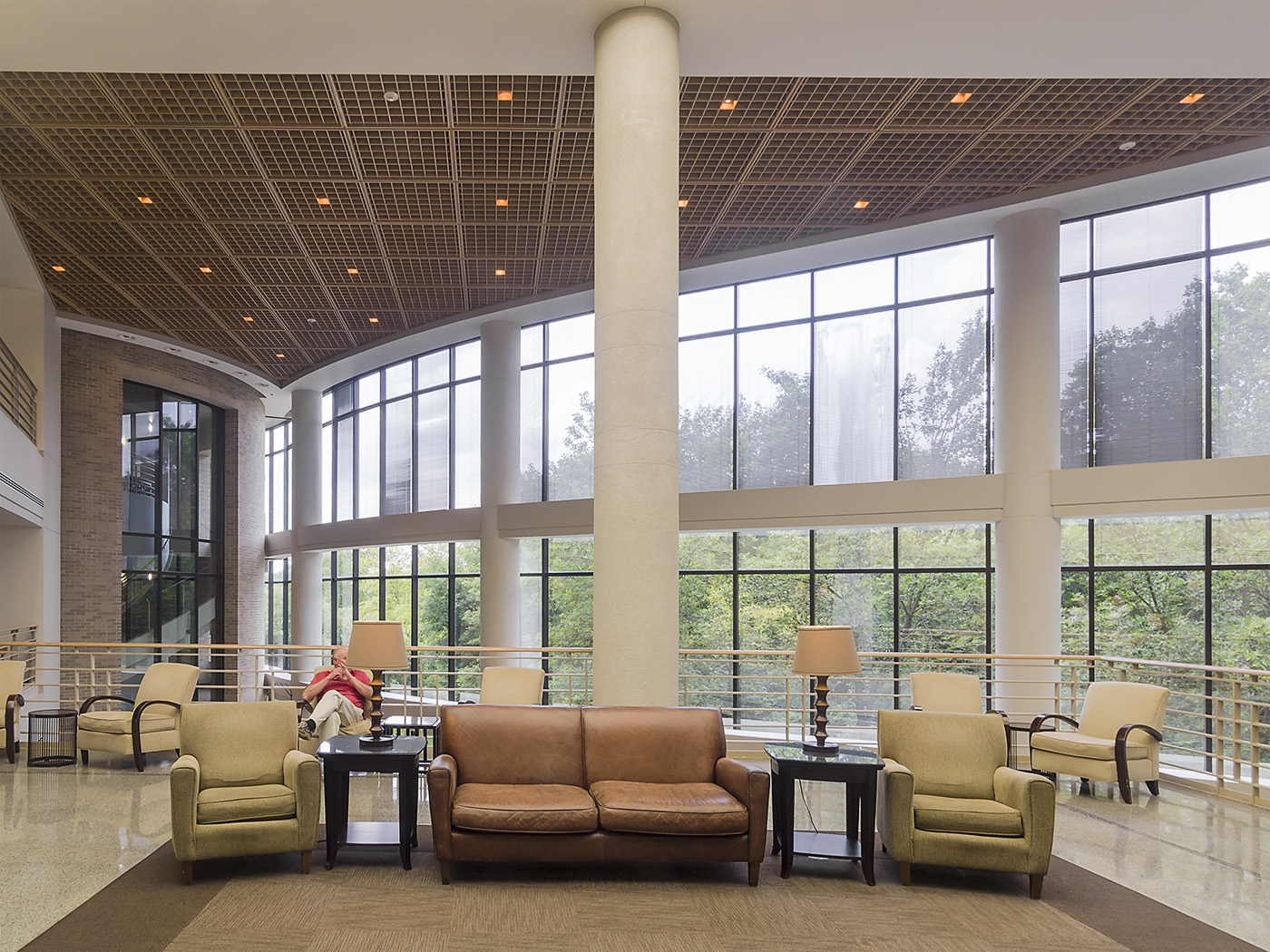
Tegular Ceiling Tile: Everything You Need to Know
Ceilings can be boring. From dingy paint to dated popcorn, home and business owners have paid little attention to ceilings over the past couple decades. But, with a little effort, ceilings can provide wonderful accents to interior design and even become focal points. When we use our imagination, we can create all kinds of modern and classic ceiling designs.
Ceilings don’t have to be ornate to be great. A simple design using tegular ceiling tiles can add a pinch of personality to any room. If you’re unfamiliar with tegular ceiling tiles, it’s time you found out how versatile they can be.
What is a Tegular Ceiling Tile?
Most of us are familiar with drop ceilings, also known as lay in ceilings. What is a lay in ceiling tile? We’ve seen them in all kinds of applications. A T-grid, suspended from the ceiling joists, creates a patchwork of tiles that supports both utilitarian functionality and interior design.
If you think of these ceilings as being plain, you’re not wrong. They weren’t that interesting to look at. But those days of drab and boring ceilings are over. Today, there are all kinds of variations that make this functional structure one we want to look at. One variation is the tegular ceiling tile. So, what does tegular mean? Let’s take a look.
What is a Tegular Edge Ceiling Tile?
The tegular meaning itself denotes things looking like or having the characteristics of tiles. From this tegular definition, it’s easy to arrive at a reasonable tegular ceiling tile definition. It’s simply a ceiling tile that makes the ceiling look tiled, with all the three dimensional glory of real tiles.
Tegular vs Lay-in Ceiling Tiles: What’s the difference?
Tegular ceiling tiles look very much like the lay in ceiling tiles that fit into the t-grid system. They are cut to the same size, and are available in many of the same finishes. When it comes to tegular vs lay in, the difference is depth.
Tegular ceiling tiles drop to a full quarter inch below the T-grid system, adding texture and depth. This depth makes your drop ceiling look far more interesting than the stereotypical flat grids you likely saw in your high school.
Tegular Ceiling Tiles and Acoustics
Believe it or not, you can use tegular ceiling tiles to improve the acoustics in the room. Choosing acoustic tiles allows them to absorb some of the sound waves that impact them, reducing audio issues. If you regularly gather in the room, acoustic tiles are worth their weight in gold.
First, they’ll reduce echo and reverberation by absorbing some of the sound waves that would otherwise be reflected. That lowers the overall volume in the room. As a result, no one will have to shout to be heard, which only exacerbates the problem.
Another benefit of drop-in tegular tiles with acoustic backing has to do with your pipes and vents. Those utilities can get quite noisy and cause us to speak loudly. But as these special ceiling tiles absorb sound waves before they reach the open room, the space stays quieter.
Decorating with a Tegular Ceiling Grid
We can achieve some awesome looks with tegular tiles. They create structure and depth at the same time. They can be simple or fairly ornate, but they’re always appealing. The type of tile you choose depends on what you’re after. Let’s look at some great ways to decorate your space with tegular ceiling tiles.
Choose your Surface
There are many types of ceiling tiles out there. With a variety of different materials come a variety of different finishes. Your material of choice should strike a balance between the aesthetic and acoustic benefits you’re after. For simplicity’s sake, we’ll look at some decorative options, and discuss the associated acoustic qualities of each one.
You Want Smooth Tiles
Your simplest choice would be to choose a flat ceiling tile. Since this type of tile is prefabricated, it’ll produce a ceiling with a perfectly smooth surface. Thus, you won’t have to attempt to hide any seams or imperfections. You can paint your flat tiles an eye-catching color and to create a pattern that really pops. Plus, the T-grid system naturally creates bold shapes and lines that contrast and contribute to a unique pattern.
You can even choose the type of grid you want. Going with 2×2 tegular ceiling tiles will yield a grid of perfect squares. If you want to add some visual length, you can go with 2×4 foot tiles. Each option is equally easy to install. You can even mix and match, with a little extra planning.
Smooth Tiles and Acoustics
Smooth finishes can negatively impact your acoustics if you don’t account for them. This is because they reflect sounds back to their source, which can cause an acoustical nightmare. But they still rank better than a completely flat ceiling, acoustically speaking, since their grid lines can diffuse some sound waves.
If you want a smooth finish but also want acoustical performance, microperforated panels are a great option. Microperforated panels allow you to enjoy smooth surfaces without the poor acoustics. That’s because they have tiny perforations that let sound in but not out. They’re also available in numerous finishes, but not always available as tegular ceiling tiles.
If you want tegular, but like the idea of microperf, try utilizing it on the walls. Microperforated panel walls will allow you to keep the tegular look you’re after and achieve great acoustics.
You Want Three Dimensional Tiles
You can also go with a three dimensional design on your tiles. Most often made of PVC, these tiles can create any repeating pattern you want. PVC tiles are economical and easy to clean, and your options are endless. In fact, there are so many variations out there, picking the perfect design may be tough.
Finish options range from geometric to ornate, and everything in between. Your choice should depend upon the type of overall decorative feel you’re going for. For something modern, geometric shapes work wonderfully. On the other hand, if you want something more classic, ornate ceiling tiles can add a lot of character.
Three Dimensional Tiles and Acoustics
Acoustically, three dimensional tiles provide some benefit, and are a little better than flat, smooth tiles. That’s because these tiles can diffuse more sound waves than the former. The amount of diffusion varies based on the design you choose, but they really don’t do much to absorb sound. If you go this route, you’ll again want to make sure you add some treatments to the walls.
Mounting fabric wrapped acoustical panels on your walls will allow you to get the look you’re after without sacrificing sound. They absorb problem sound waves before they can begin bouncing around the room. The angles in your ceiling tiles will help scatter the waves that remain. A combination of absorption and diffusion are essential in eliminating echo and reverb from any space.
You Want Textured Tiles
If you want a textured look, you’ve got options there too. Many textured ceiling tiles are made from mineral wool, waste paper, and various other components. They look pretty good, and will provide some decent sound absorption. But, if you want more bang for your acoustical buck, you can’t beat wood wool.
Not only is wood wool an attractive way to improve your acoustic profile, but it’s sustainable as well. Wood wool is created by bonding wood shavings with cement. The result is an organic texture that can be painted any color under the sun. No matter what look you’re going for, this option pulls double duty.
Textured Tiles and Acoustics
If the acoustical performance of your tegular tiles is important, some options are better than others. As a rule of thumb, the more texture you see, the better tiles work at absorbing noise. Wood wool is a perfect example.
A wood wool panel is composed of tens of thousands of intertwined wood shavings. This is the perfect surface for sound absorption. Sound waves make their way in and get trapped. Combine that with their awesome appearance and sustainable nature, and you’ve got a winner.
Choose your Edge
The next decision you’ll have to make is what type of edge you want. Tegular ceiling tiles are available with a range of tegular edge types. That means your choice doesn’t stop at tegular vs non tegular ceiling tile. Some drop straight down, while others are cut at an angle. You can even find some that are beveled to create a true tile look. Going with a tegular edge vs square edge can change the whole look of the room.
Square Edge Ceiling Tiles
Going with a square edge can deliver a unique look. This type of edge creates geometric shapes that drop vertically from the ceiling grid and accentuate the depth. If you want to create the hardest lines and separation, this is the way.
Angled Tegular Ceiling Tiles
Angled tegular is another incredibly popular option. Instead of dropping straight down, they are cut in at an angle. The result is a softer look with more dimension due to the angled lines. Adding that extra angularity can add a boost to many different types of interior design.
Beveled Ceiling Tiles
Beveled tiles are much like angled tiles, but the hard angles are smoothed down. Going with a beveled edge will make your tegular ceiling tiles look the most like tile, if that’s what you’re after. These tiles have the dimension of angled tiles, but also the smooth transitions that further soften the look of the space.
Choose a Company that Knows what They’re Doing
Now that you’ve learned about some of the tegular edge ceiling tile options available, it’s time to do your research. Find out what you like and what you need. Make the big tegular vs square lay in decisions that can make or break your design. Find your balance.
The best way to find that balance between acoustics and aesthetics is to work with an experienced company. Installing tegular ceiling tiles is simple, but choosing the right materials can be a little more tricky. Go with your gut and let us back you up.




